Cortical screws are designed to affix dense cortical bone and have narrow, shallow threads. They usually traverse both near and far cortices.
Cancellous screws have wider and deeper threads to grip porous cancellous bone. If the proximal part of the screw is smooth, they are termed partially threaded screws. When a partially threaded screw traverses two bone fragments, it will pull the distal bone fragment toward the proximal one as it is tightened. When a screw is used in this manner, it is sometimes called a lag screw. Cannulated screws have a flat distal end and hollow core, for placement over a guide wire. Cancellous screws are often also cannulated, as seen in this example.
Interference screws are bullet-shaped screws for affixing a tendon graft in cruciate ligament repair.
Headless variable compression screws (Acutrak or Herbert) have wide threads at one end and narrow threads at the other. They function as lag screws to compress two fragments against each other and are used in repair of scaphoid waist and some osteochondral fractures.
Dynamic hip screws are partially threaded cancellous screws used to affix some femoral neck fractures. The screw telescopes into a sleeve fixed to the femoral shaft as the patient begins to bear weight and the femoral neck compacts under normal stress.
Ankle fracture fixation. Cortical plate and cortical screws affix a distal fibular fracture. A partially threaded, cannulated, cancellous screw affixes a medial tibial malleolar fracture. Cortical plates are used to appose fractured bone and come in several varieties. They are often contoured for use in specific locations and usually affixed with screws that traverse both the near and far cortex of the bone to which they are attached.
Compression plates are used for simple diaphyseal fractures in otherwise healthy bone. Oval holes with sloped margins allow screws and bone on either side of a fracture to move toward each other as the screws are tightened. Low-contact plates have an undu- lating appearance along their juxtacortical surface that improves vascular supply adjacent to the plate by limiting periosteal compression to the points of screw fixation.
Reconstruction plates have notches along the sides that allow them to be contoured in the operating room. They are often used in fixation of pelvic fractures.
Buttress plates are wide or flared plates that provide additional support for fixation of comminuted fractures. They are usually used at the distal radius, distal tibia, distal femur, and proximal tibia.
Cerclage wires support circumferential apposition of fractures in tubular bones
Tension band wires are used commonly at the patella and elbow to affix a portion of bone so that the attached muscles act to force fragments together rather than pull them apart.
Kirschner wires (K-wires) are thin wires, used in fracture stabilization in small bones and in comminuted fractures with multiple fragments.


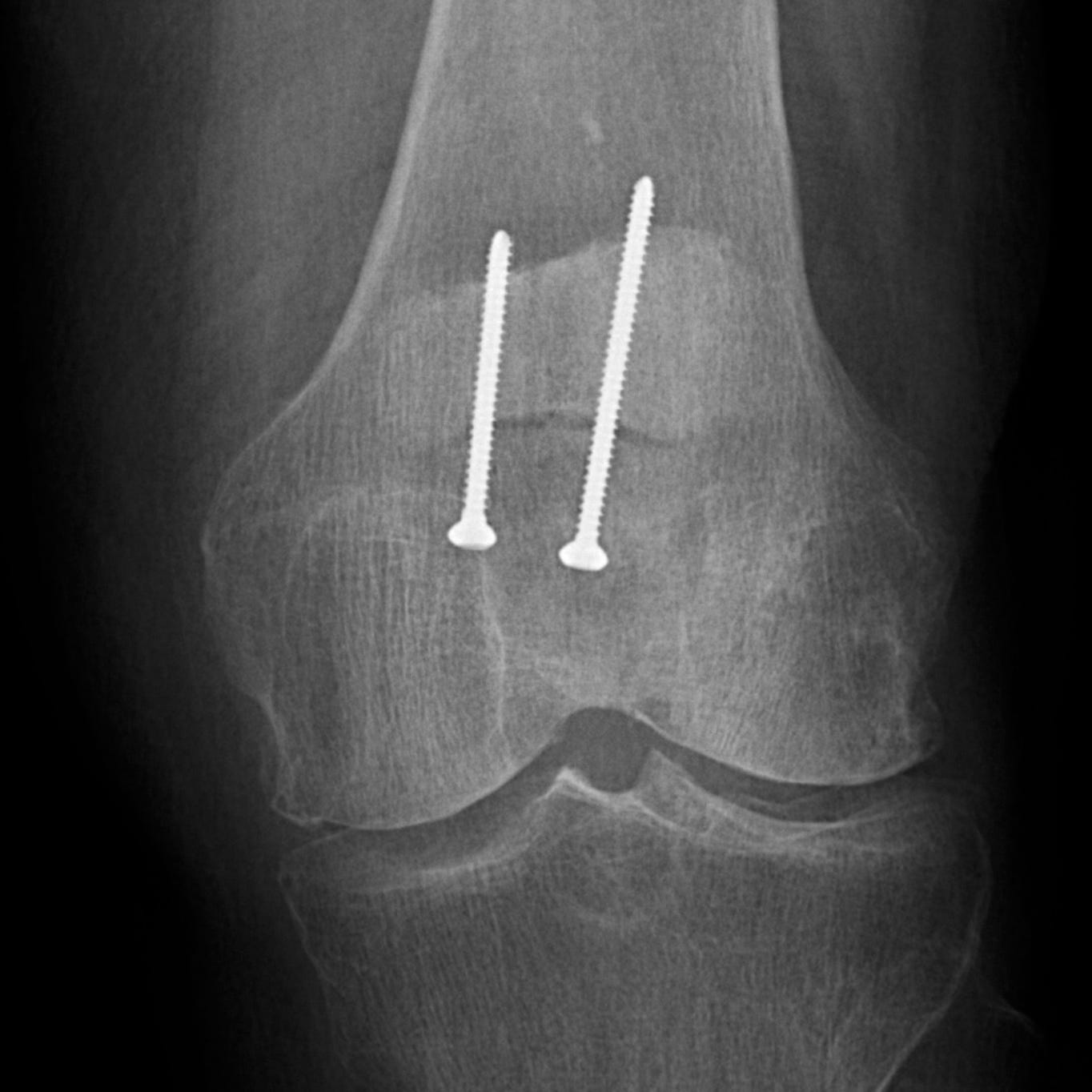

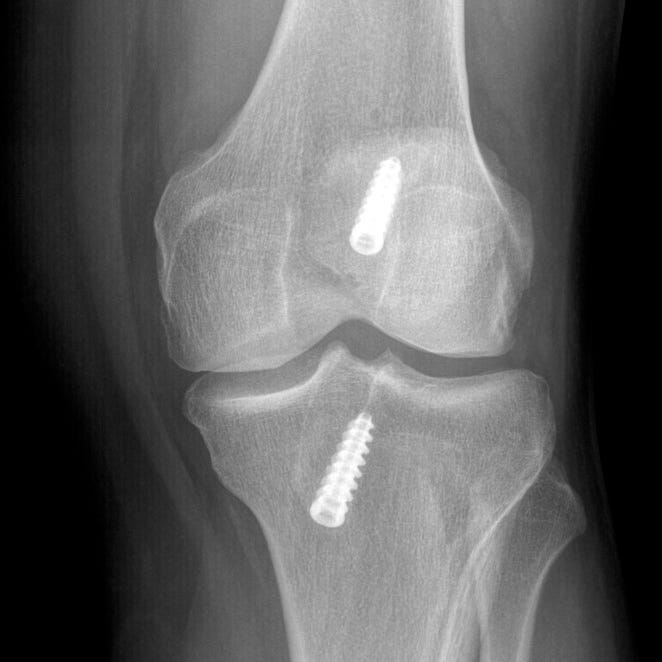
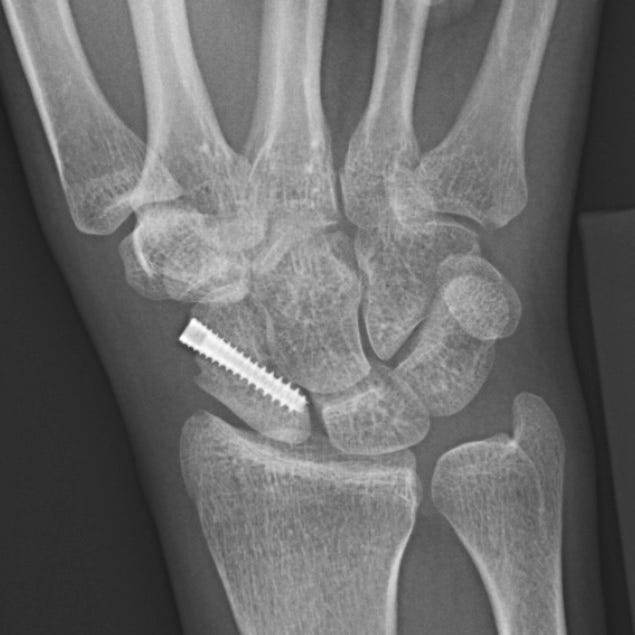
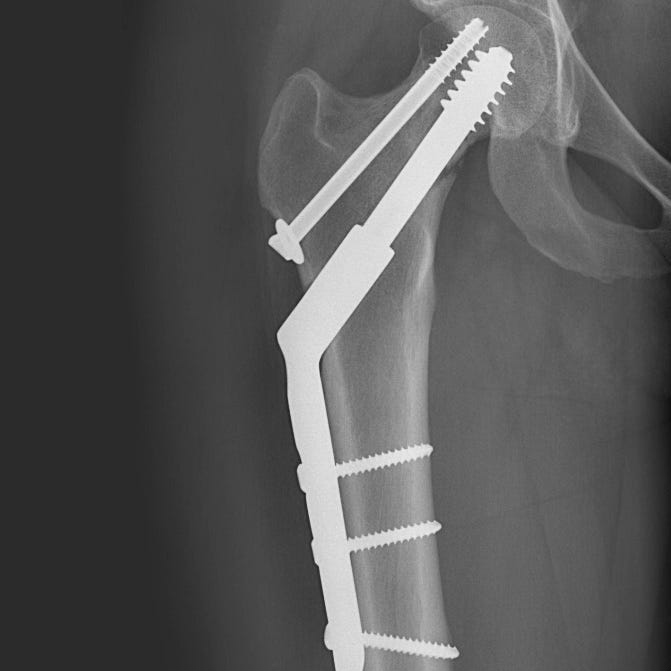
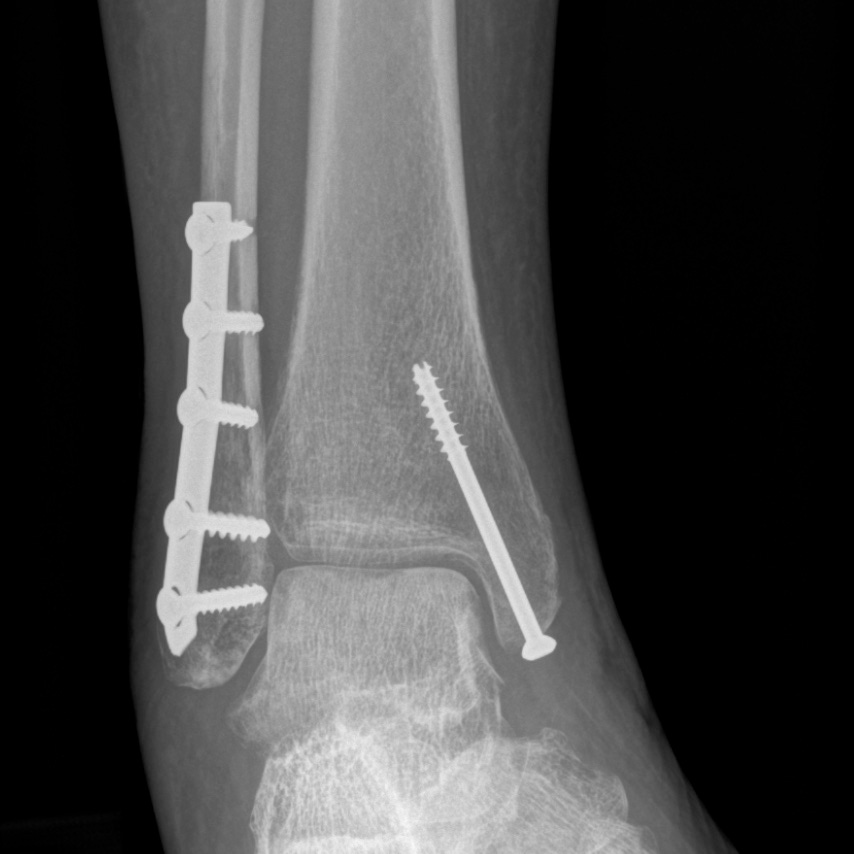
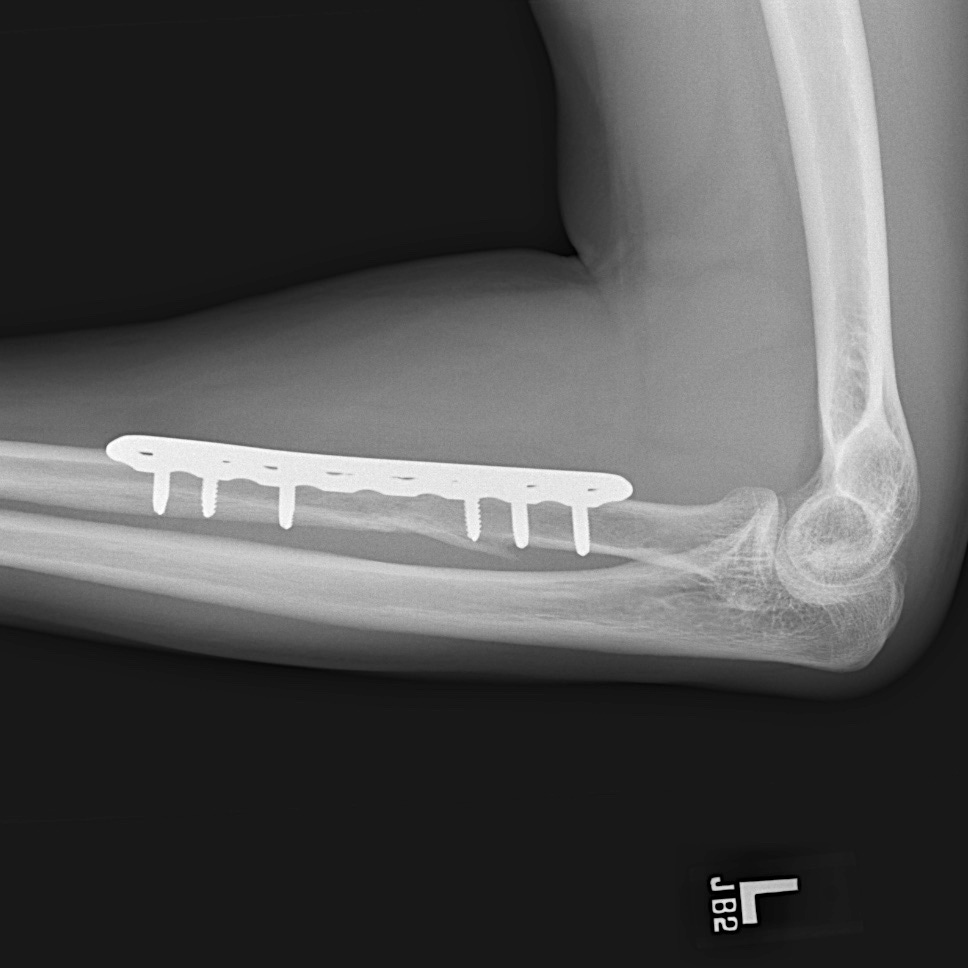
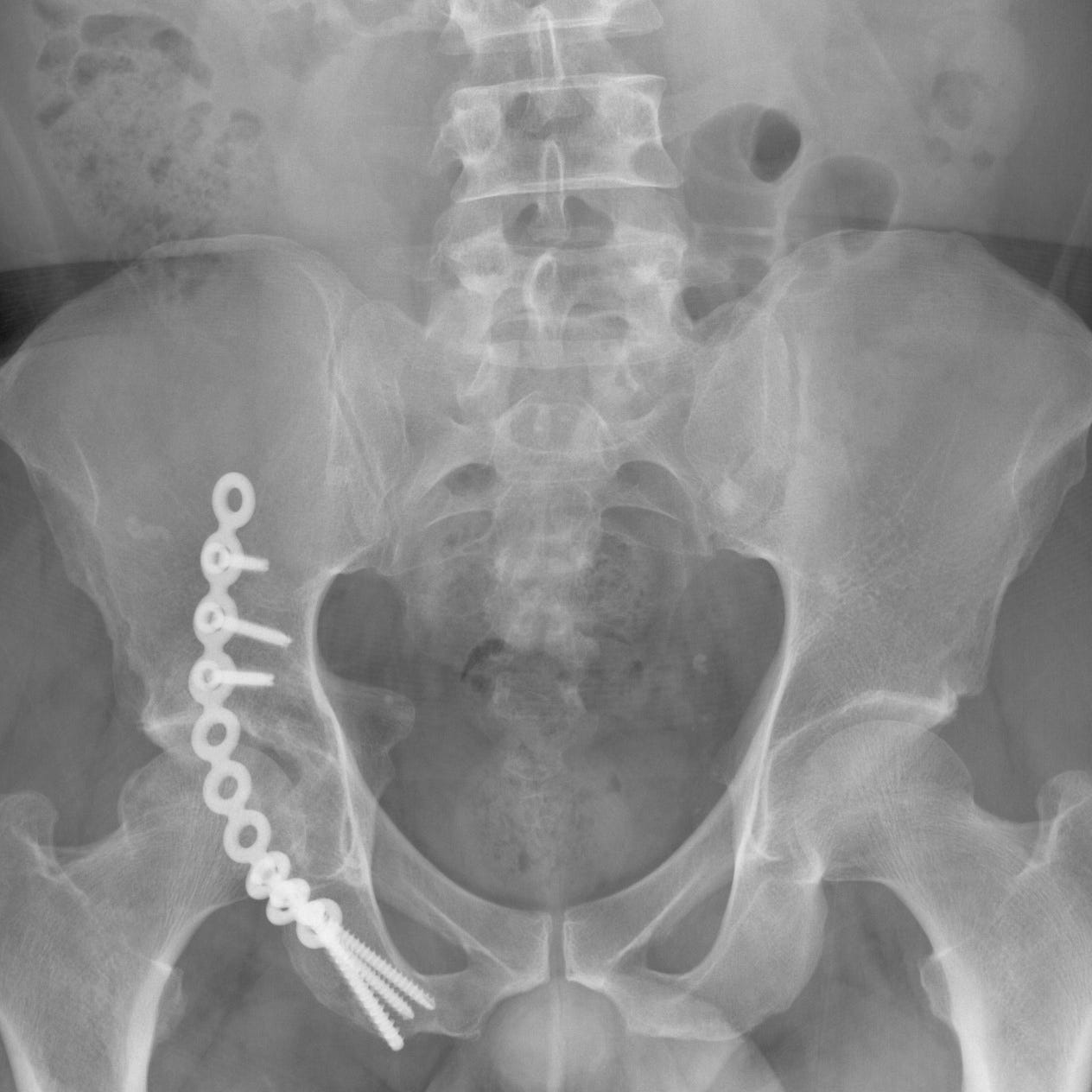
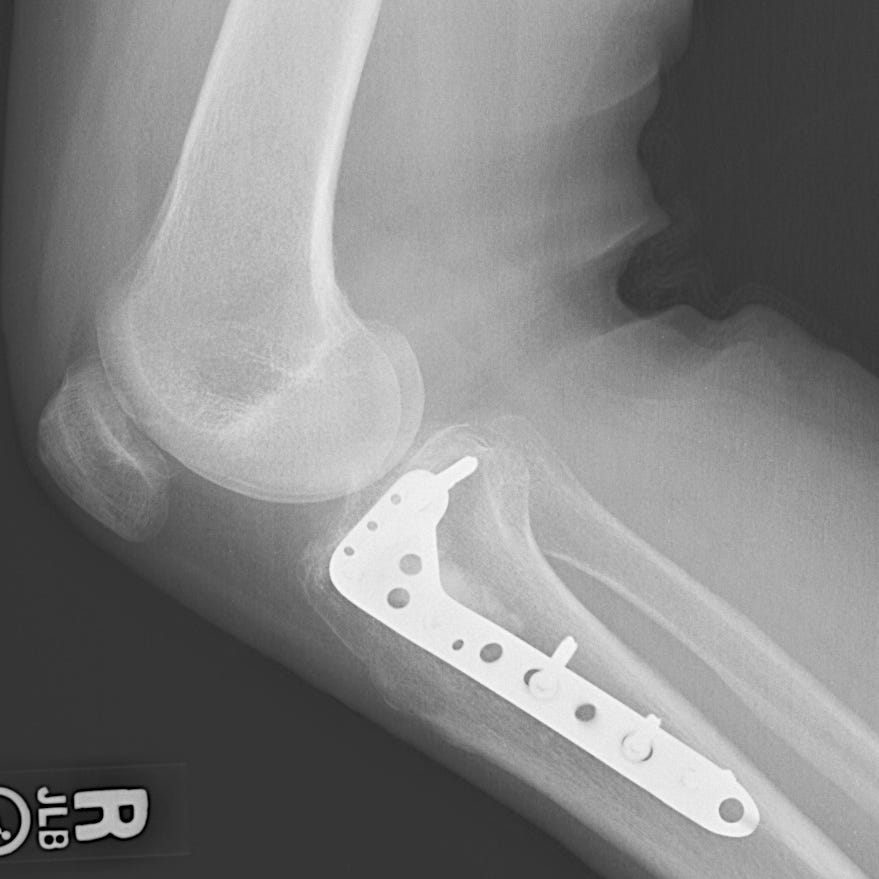
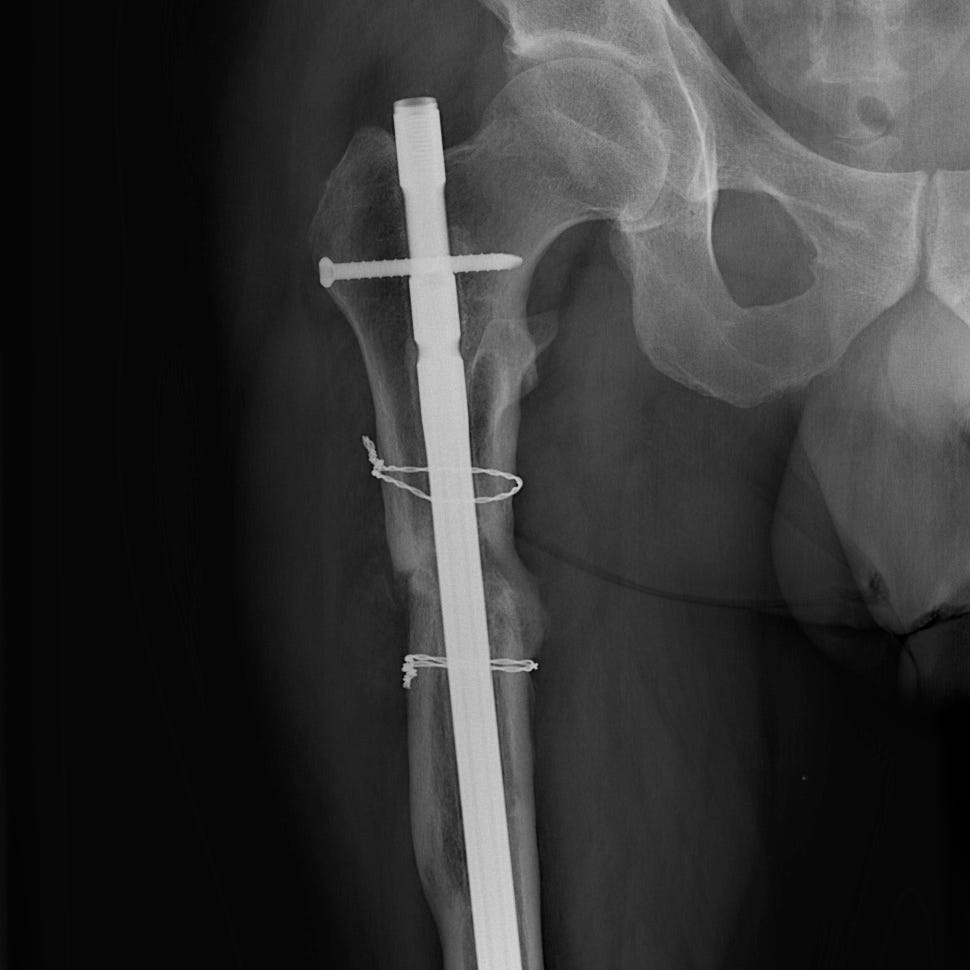
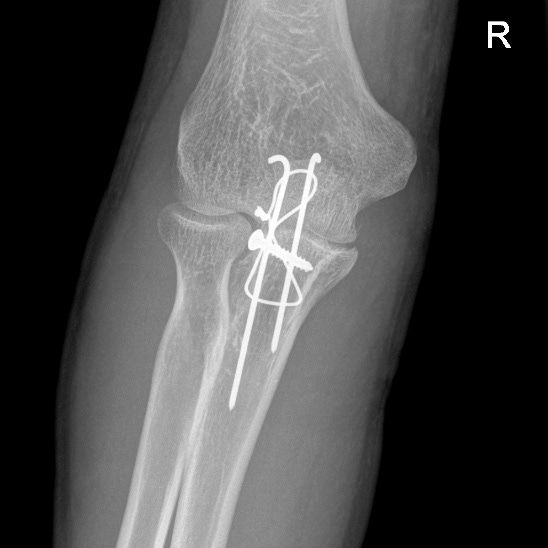
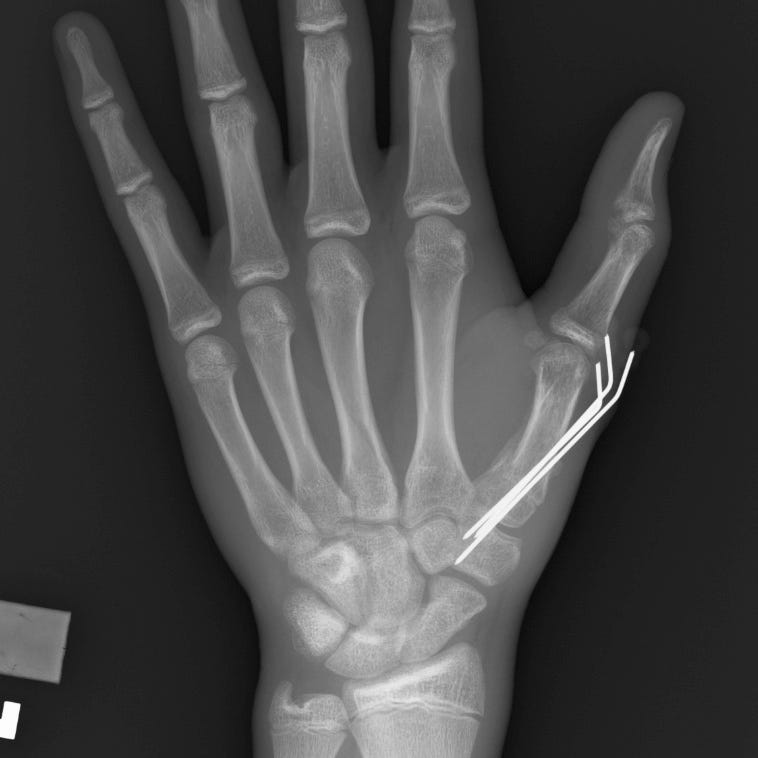
👍👍